
There was a time when Formula 1 was about more about power than politics, and playboy drivers showed their Playboy affiliations overtly on the side of their cars rather than the gossip pages of newspapers. There was an honesty involved, of both the cars and the championship: a period where the cars and tracks had become relatively safer (at least drivers were being killed with less frequency) but the basic premise of the cars still put the priority on driver skill with his feet and hands rather than electronics. And most importantly, they were fearsomely fast.

The Grand Prix Masters series held a round of their championship at last weekend’s Silverstone Classic festival, which saw almost 30 Cosworth-powered classic F1 cars take on the new Grand Prix layout.
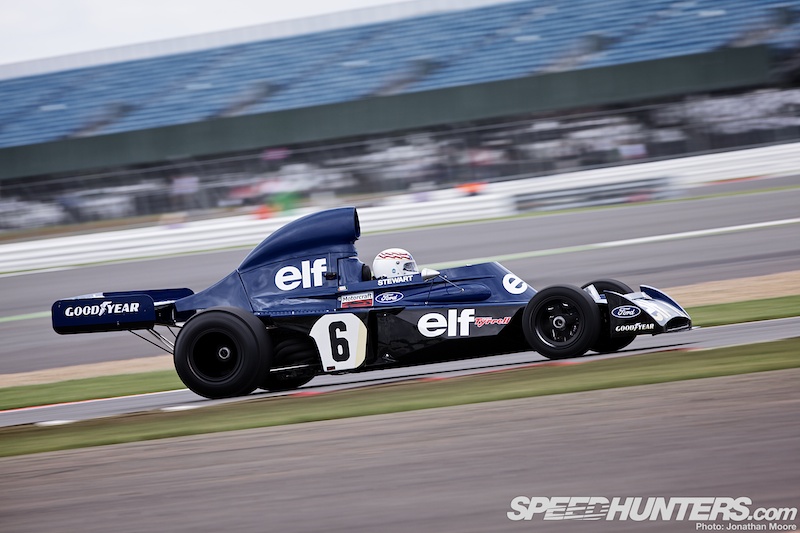
Concentrating on the period when wings and aero were in place but touching on the introduction of ground effect (though avoiding turbos and active electronics), GPM provides an arena for the balls-out demonstration of classic F1.
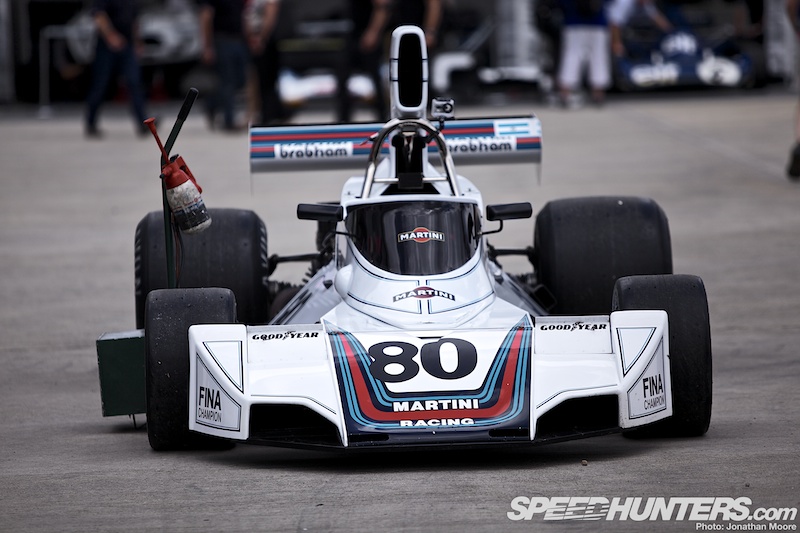
The cars are predominantly from the 1970s, and are split into four distinct classes. Three are named after drivers of the respective period that each group includes: Stewart for cars from ’70-’72, Fittipaldi ’73-’74 and Lauda ’75-’77. Guessing from body shape alone it’s almost impossible to classify cars together due to the radically different interpretations of the rulebook taken by the different teams.
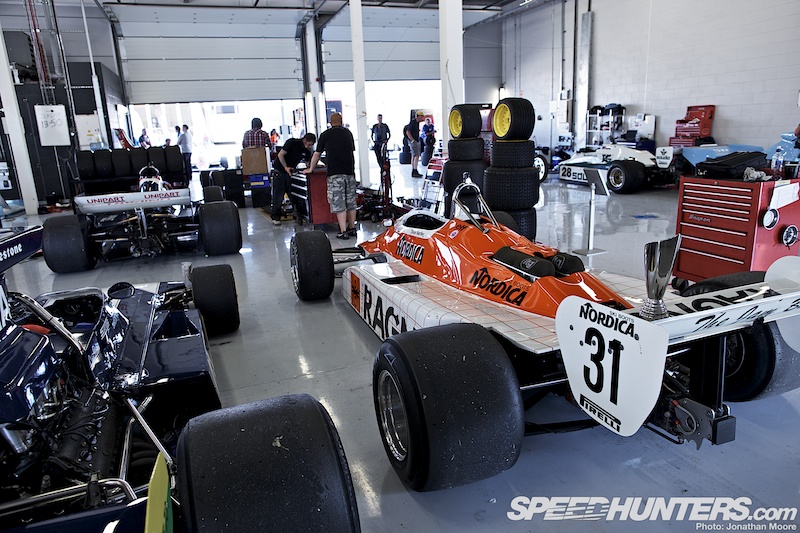
The Head class, named after former Williams technical chief Patrick Head, is for post-1978 cars. Entrants to the series are now nudging the mid-80s, right on the cusp of ground effect and turbos.
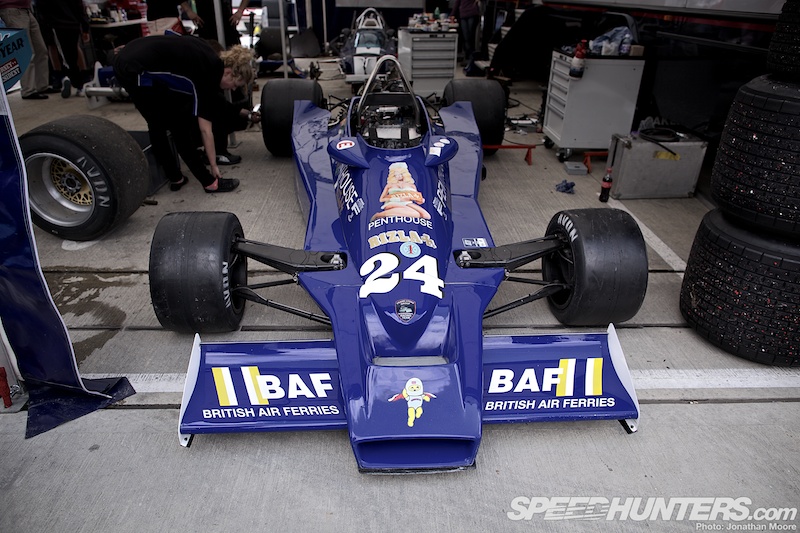
The cars themselves are all resplendent in their period liveries, however non-PC they might be, and usually proudly display the names of their original drivers on the sides: Watson, Andretti, Alboretto, Jarier, Patrese, Stewart…
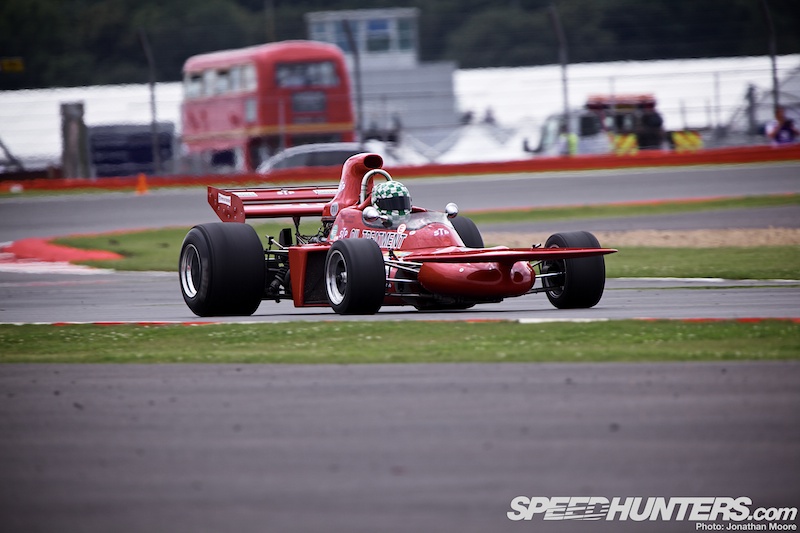
The cars taking part show the stark evolution of F1 cars over a decade. Starting off in the early ’70s, cars sported rudimentary wings and ducting, with some very strange approaches often tried. The elevated front wing of the 1971 March 711 is alternately known as the Spitfire or, most accurately, the Tea-tray.
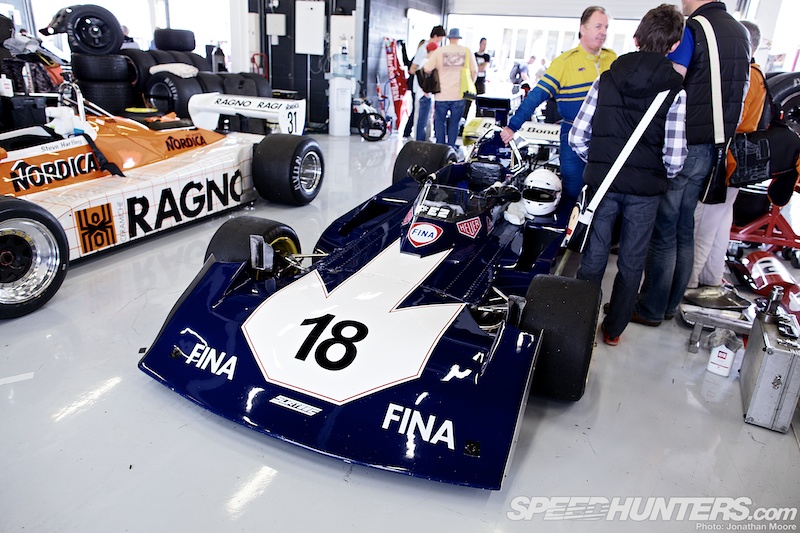
John Surtees was a three-time Motorcycle World Champion when he switched codes to four wheels, winning the F1 World Championship in 1964. He formed the Surtees Racing Organisation in 1970, finding the majority of success in lower-tier single-seat formula, but also scoring several podiums with his F1 team. The arrow livery immediately identifies Surtees’ cars: this is a TS14 from 1973.
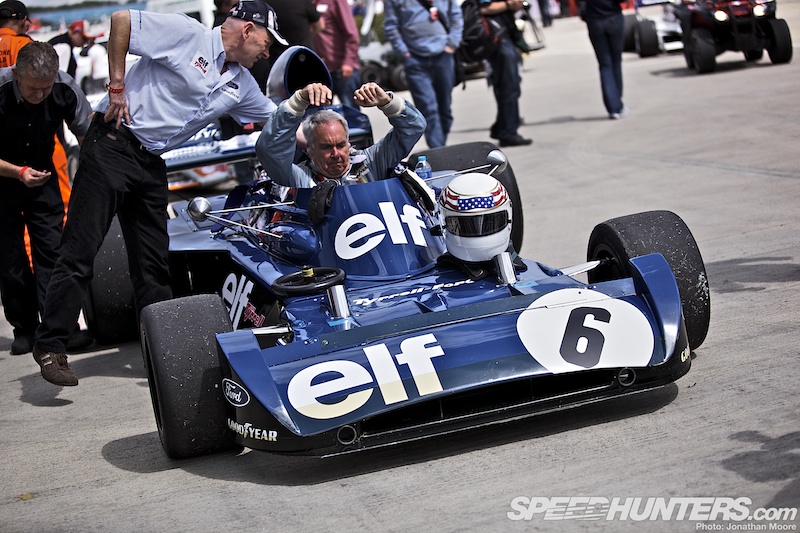
Tyrrell were well represented on the GPM grid: five cars showed a decade of development, from Jackie Stewarts’ 1973 Tyrrell 006 through the six-wheeled P34 and 009 to the snub-nosed 012.
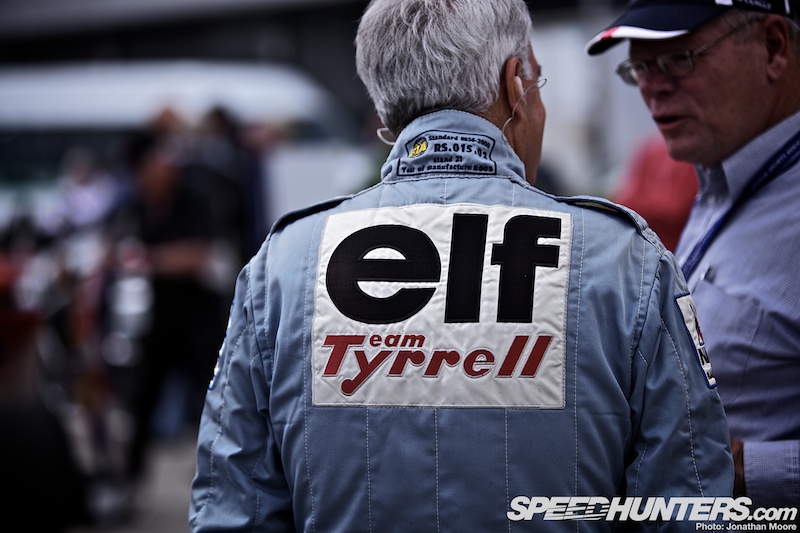
Period cars also give a great excuse to get into character and look the part. There’s something about ’70s colours and typography – when it works it can ooze class. Though when it’s wrong (ie, brown or bubble fonts) that’s another matter…
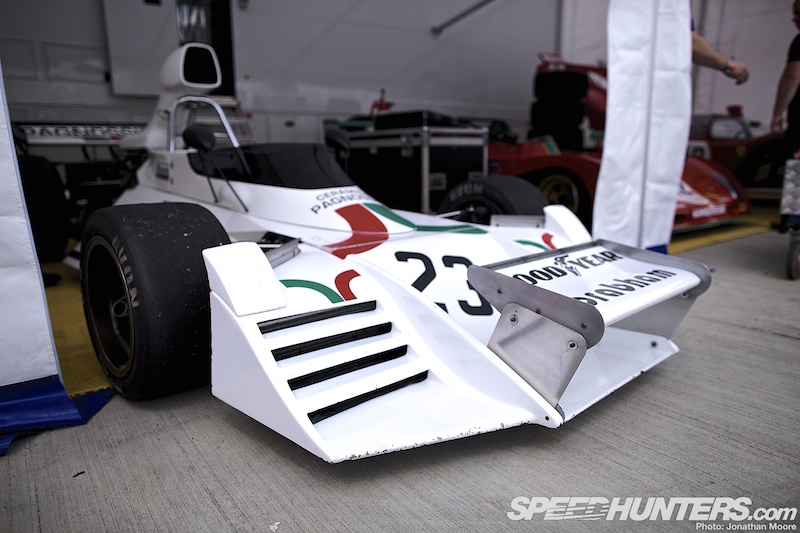
Two Brabhams were run out. This BT42 from 1973 looks vastly different to its contemporaries, a result of the pen of design genius Gordon Murray in tune with the meticulous sensibilities of Bernie Ecclestone.
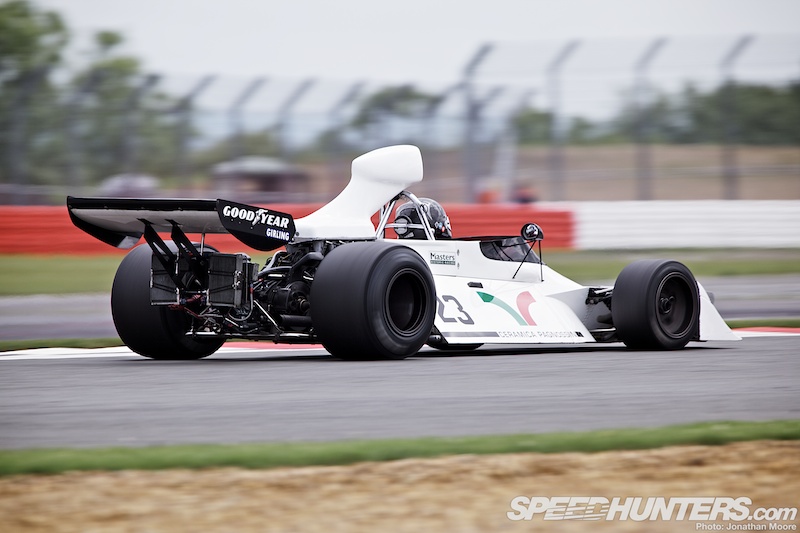
Nothing else on the ’73 grid looked as angular and futuristic: it’s almost more in tune with the cars of a decade later.
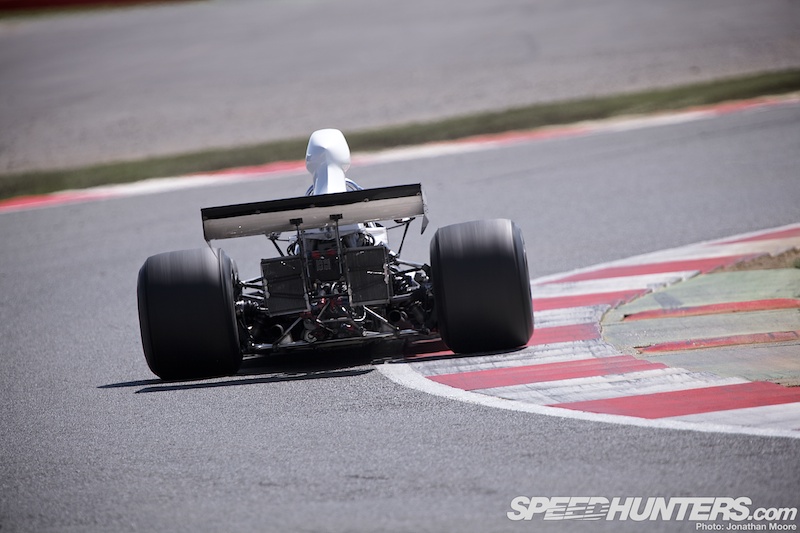
It’s only from the rear that the open engine internals, plus the high air box, lend it a more classic feel. And look at the size of that rubber!
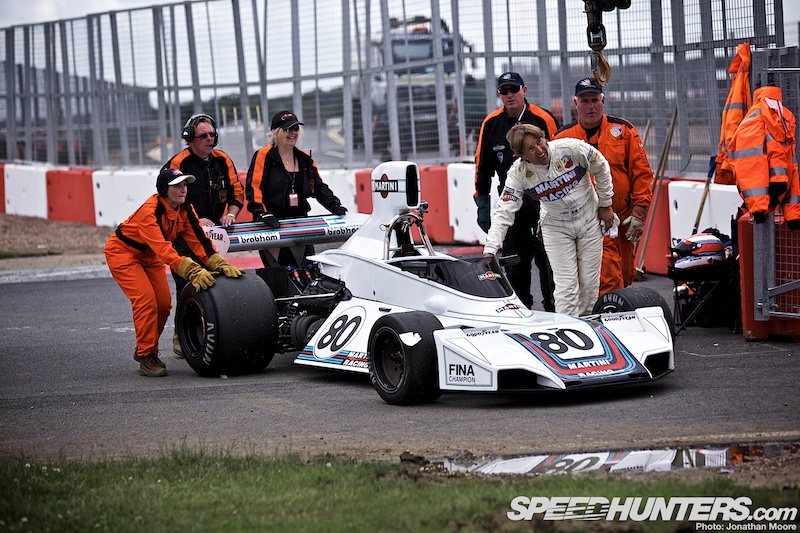
The BT42 evolved into the BT44 for the 1974 season: Carlos Reuteman took three wins in the Martini-liveried car that year, but a string of retirements stymied his championship effort. Unfortunately things didn’t go well for the car in its modern incarnation either…
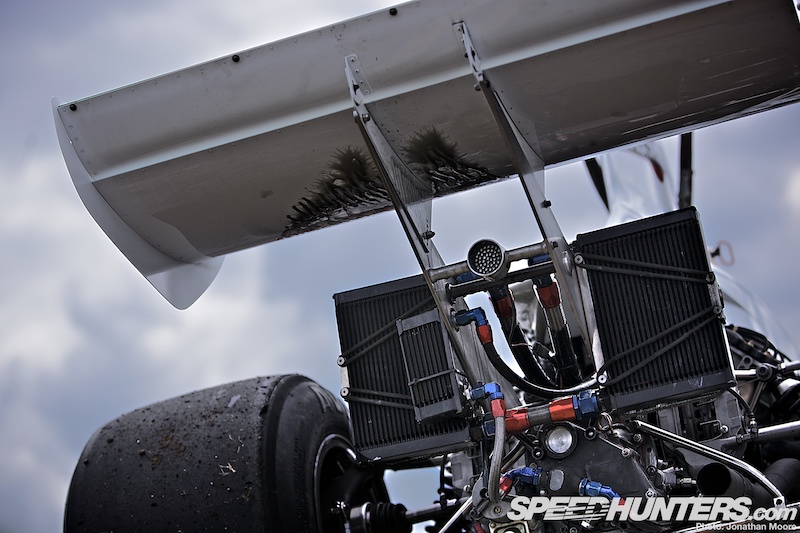
A failure put out current driver Manfredo Rossi during the first of two races, and meant the Brabham wouldn’t be out for the rest of the weekend. The cause of the retirement was plain to see.

Perennially unlucky Kiwi Chris Amon revived his own team for 1974, turning down an offer to drive for Brabham: the Amon F101 took some pretty obvious design cues from the Lotus 72, but was anything but as successful and Amon was back in a factory car by the end of the year. The car now runs a lot more reliably in the hands of Ron Maydon.
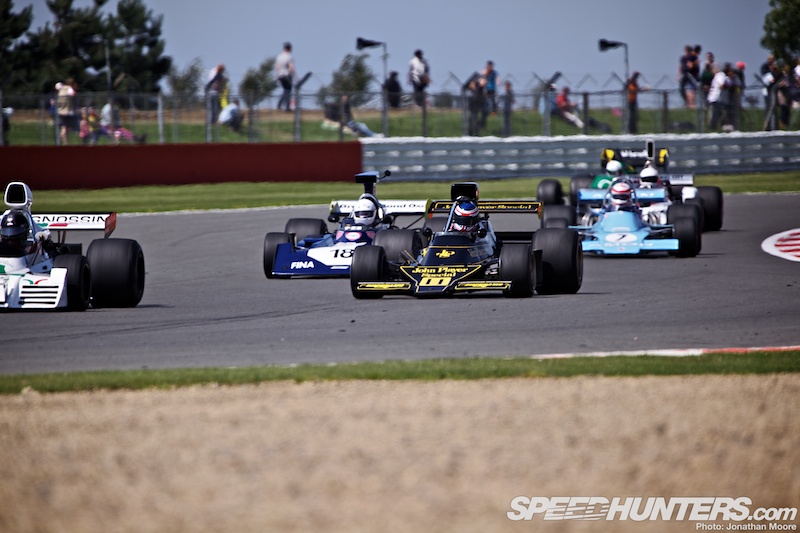
The Lotus 76/1 was a development of the 72, featuring a longer wheelbase, a lower monocoque and revised aerodynamics. The most interesting thing about the latter was the dual rear wing, with two smaller wings mounted independently above each other. The car was not the step forward the team had hoped for, however, and the drivers reverted to the 72 after a string of retirements. It’s amazing that these kind of super rare cars are actually the ones more often seen out and racing in historic series – something that was almost impossible at the time.

March continued to build and supply fast and reliable chassis for privateer teams throughout the decade: this is the 761 from 1976.
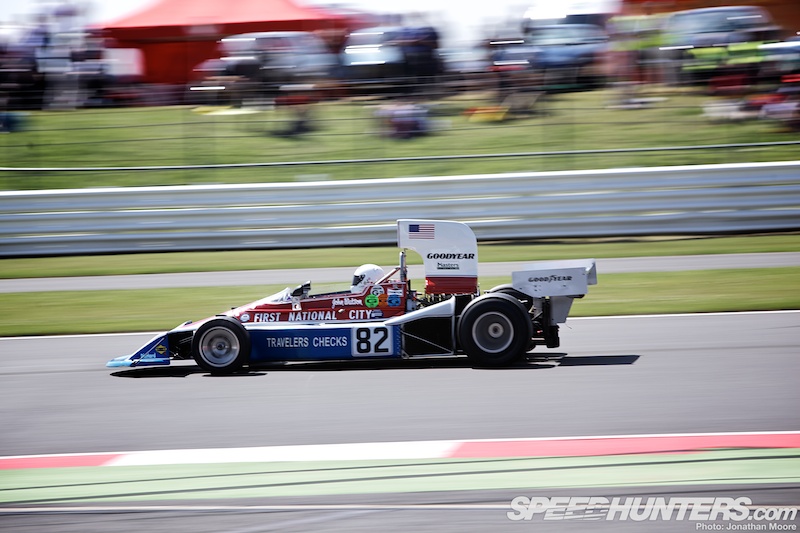
American team Penske entered a solo PC3 for John Watson in 1976, in which he famously took the car’s only F1 victory in the Austrian Grand Prix at the Österreichring. All these era of cars feature the wedge-shaped nose profile and high air boxes, with the rear of the car still exposed to the elements.
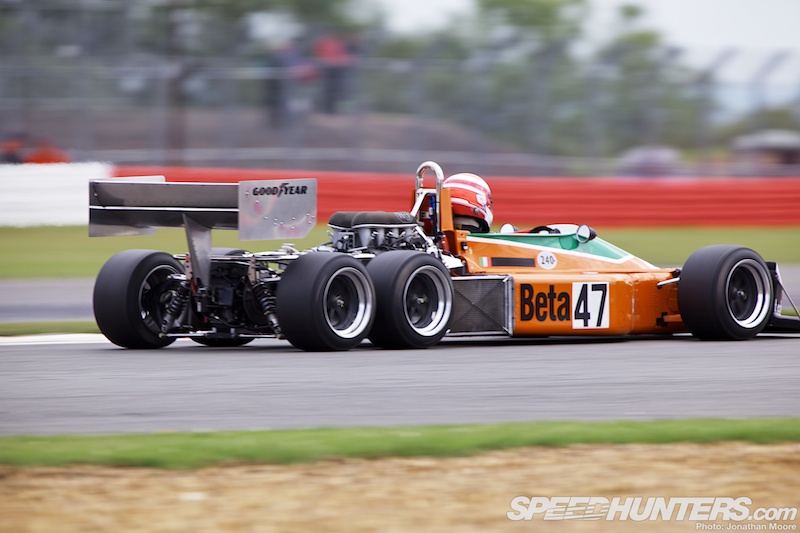
Now the second of our six-wheelers: the March 2-4-0. The car was developed by March for use in 1977, taking the concept introduced by the Tyrrell but switching it round: the big rear tyres had negated any aero improvements for the P34, but by using six rims all of the same 16″ diameter the air would theoretically be cleaner to the rear wing and rear grip improved. Although testing showed that traction was phenomenal, gearbox problems and weight issues meant the car reverted to four-wheel configuration until undergoing an extensive rebuild a couple of years back.
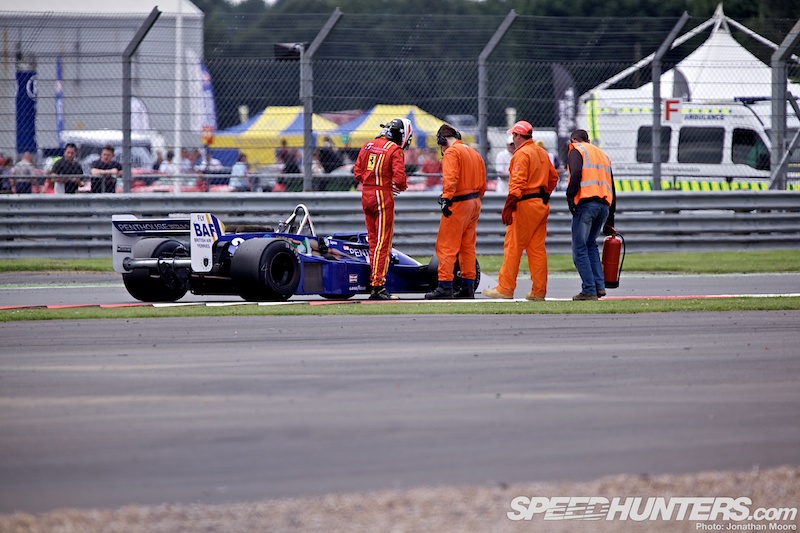
Things take a serious design turn for 1977: lowslung and long, F1 cars look hugely different. The big airboxes are gone, and the rear wings dropped in tune with the new silhouette and the bodywork now extends over the engine. This is the Hekseth 308E, which was being driven by contemporary Ferrari Blancpain Endurance Series driver Michael Lyons.
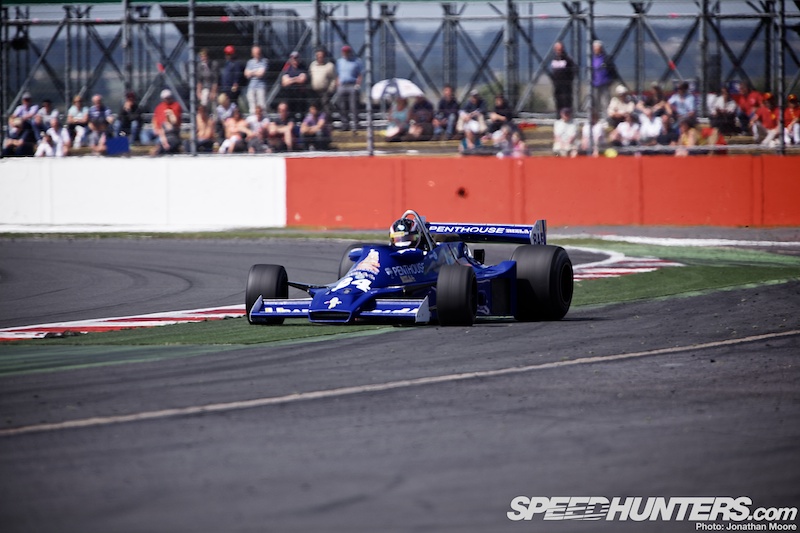
The Hesketh was one of the fastest cars out there, turning laps in the low 1:50s – when it was pointing straight on. The car was a blizzard of entertaining oversteer through the fast corners, looking quite a handful.
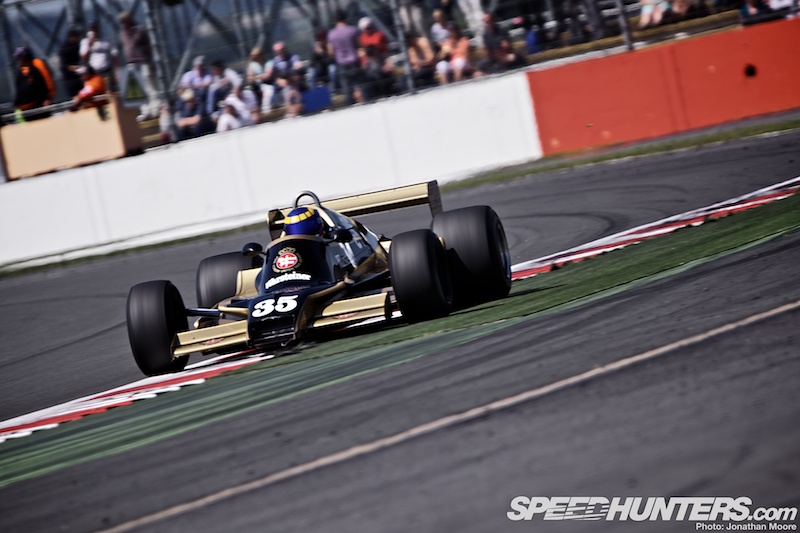
The Arrows A1 was from the following year: the car was a hasty replacement for their original FA1 design, which had been judged rather too similar to the Shadow DN9. Ricardo Patrese’s career kicked off here, after he jumped ship from Shadow along with team principal Jackie Oliver to form Arrows – the name had been taken from the initials of its founders’ surnames: Franco Ambrosio, Alan Rees, Jackie Oliver, Dave Wass and Tony Southgate. The Warsteiner-sponsored car kicked off the team’s campaign in 1979. The driving position is still quite elevated here, with the cockpit area adding considerably to the frontal area.

The Candy-sponsored low-line Tyrrell 009 was one of the fastest cars all weekend, often seen battling with the Arrows A4 for the lead. Four podiums came the way of French drivers Jean-Pierre Jarier and Didier Pironi back in ’79, and the cars were pretty much always in the points when they finished – but too many retirements prevented them fighting for the championships.
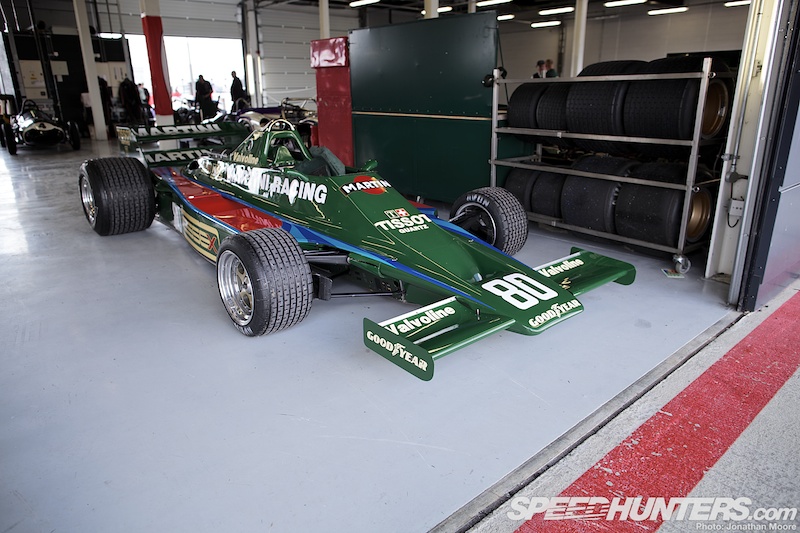
This Lotus 80 sat in the garage whilst driver Mandredo Rossi battled with the oily Brabham; with the 80 Lotus made the whole car into a ground effect device, with everything from the nose back contributing to the downforce package. It also shows the beginning of the now ubiquitous Coke-bottle shape that is now used in an extreme form in today’s F1. But like the 76, the car proved to be a development too far and the team were forced to fall back to the 79 after just three races.
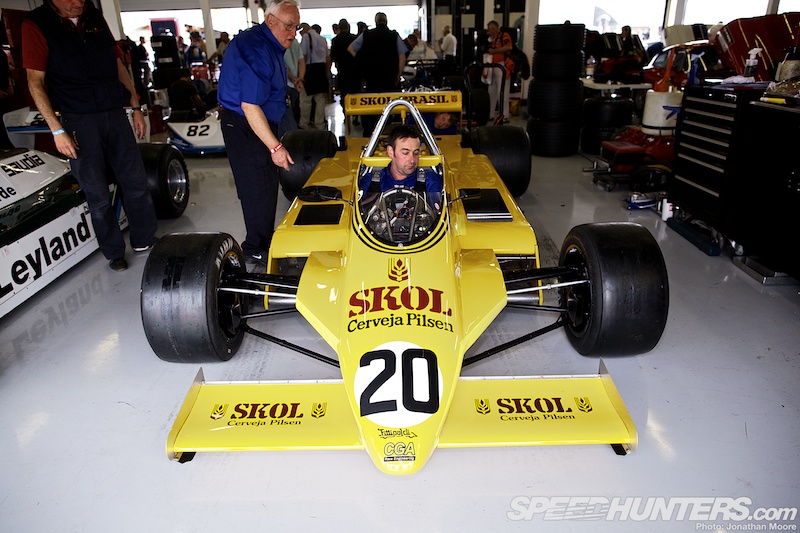
World Champion Emerson Fittipaldi, like so many previous drivers of the time, had formed his own eponymous team: though never successful, they had managed a second place at their home race in 1978. For 1980 they had expanded to a two-car team, running a pair of F8s with new-boy Keke Rosberg driving alongside Emmo. Two podiums at the beginning of the season were followed by multiple failures in the second half of the season: Emmo retired from driving at the end of the year.

The garages at Silverstone had been opened out, with all the dividing walls removed to create a big aircraft-hangar style space: this meant you could see all the cars lined up together and get right up close. The Tony Southgate-designed Arrows A3-3 was from 1980: Patrese had continued with the team, though it would be another tough year.
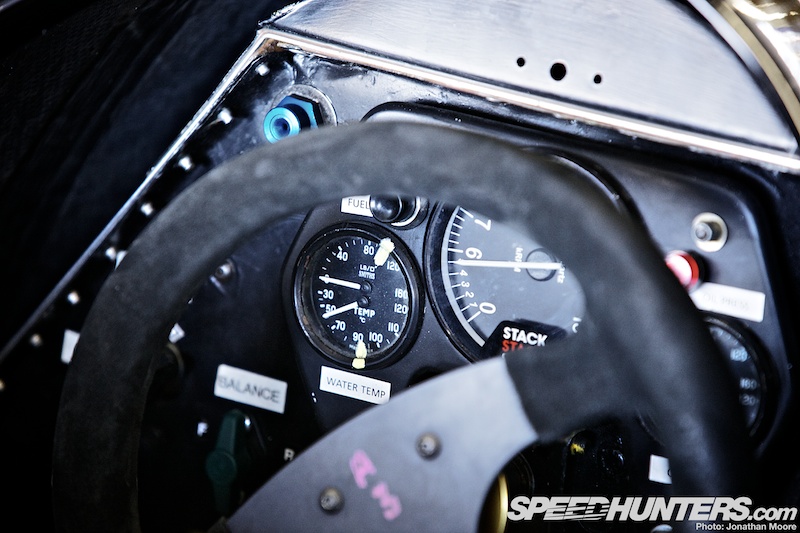
The drivers are still sitting well forward in these cars, with just a short nose ahead of them and a simple cockpit layout.
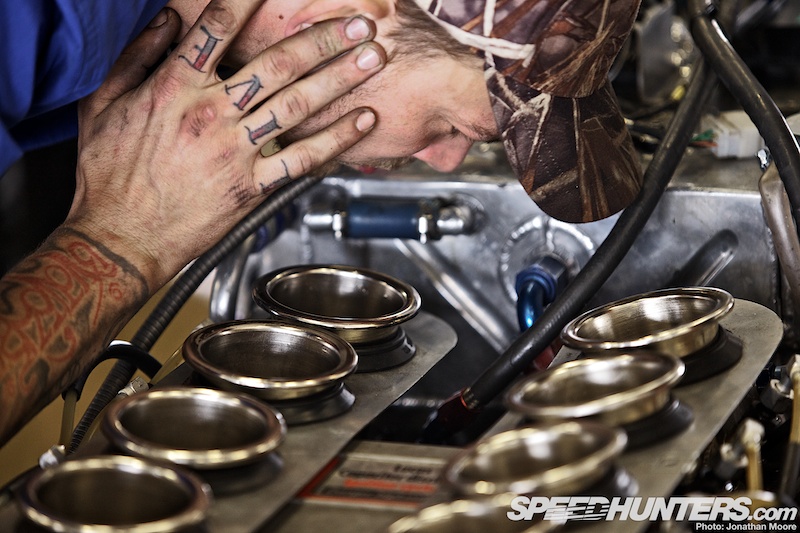
There’s nothing like the sound of a dozen Cosworth engines all being warmed up. Although I think I’d used ear defenders if I was checking out the trumpets.

The rear gearbox and suspension units can seem quite agricultural in comparison to today’s cars. Modern components are used to beef up the period units, helping with reliability and performance.
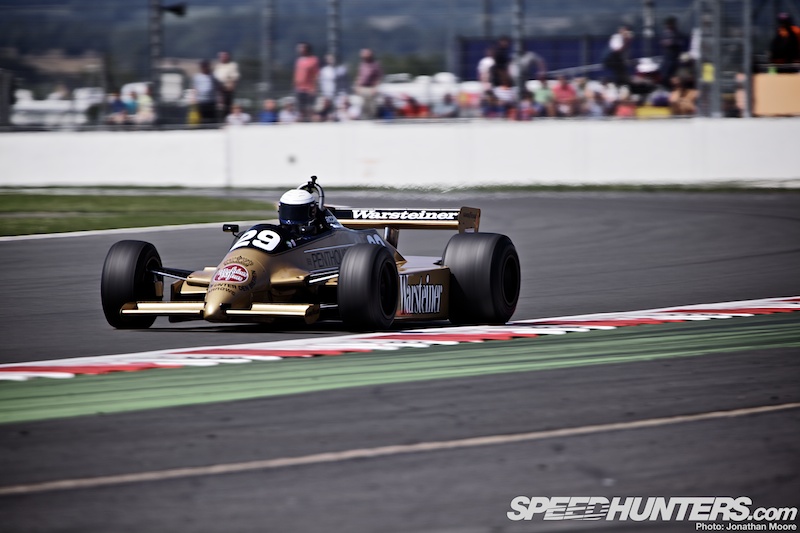
The F1 cars naturally looked quite at home on the big Silverstone Grand Prix layout: they frequently used all of the kerb and more, especially at the ultra-fast Copse corner.

The only shame is that the Bridge section of the old track now seems permanently out of use, so all the races used the new Grand Prix arena complex. It would have been nice to see the cars stretch their legs through some more of the classic fast corners. March Engineering had returned with their own team in 1981, running the unfortunately hugely unsuccessful 811: it failed to qualify for the majority of entered races…
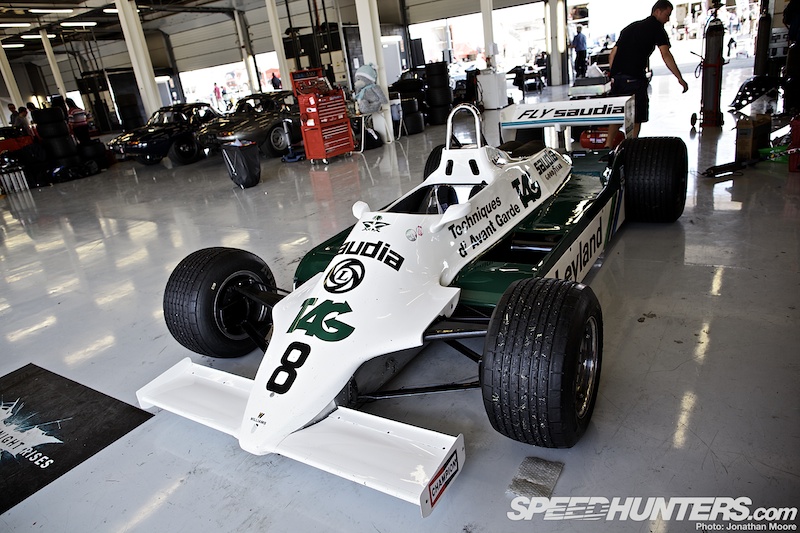
The ’80s saw the rise of the Williams Grand Prix Engineering team: formed in 1978, they won the first of many Drivers and Constructors Championship just two years later. The FW07 is such a great looking car: clean lines and a classic, understated livery. It used full ground effect principles, being part of the first wave of teams to exploit the new technology.
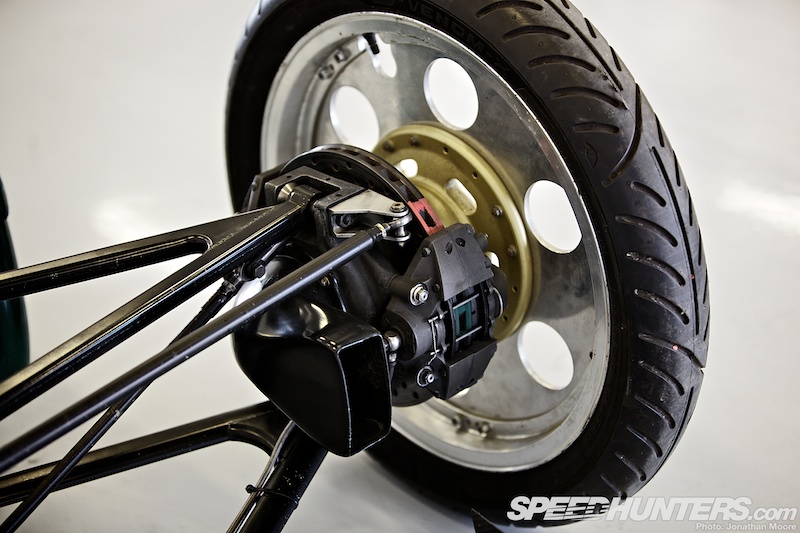
The team running this FW07 mounted thin rims for transporting the car, giving unobstructed views of the suspension and brake assemblies.
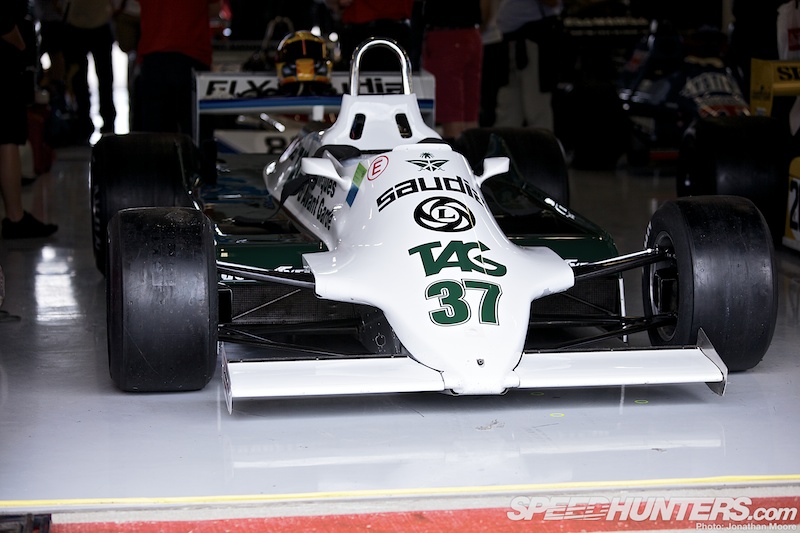
The car was introduced in 1979, and evolved over four years to win 15 Grand Prix, two Constructors titles for Williams and the Drivers Championship for Alan Jones.
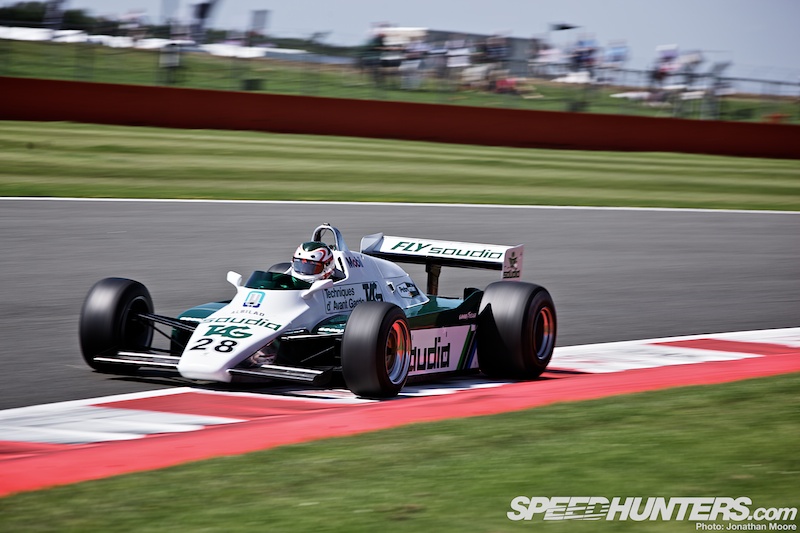
The Williams FW08 followed on. In its original form the car continued with full-length ground effect skirts during the 1982 season, before being redesigned as the FW08C, the last Cosworth-powered Williams of that era.
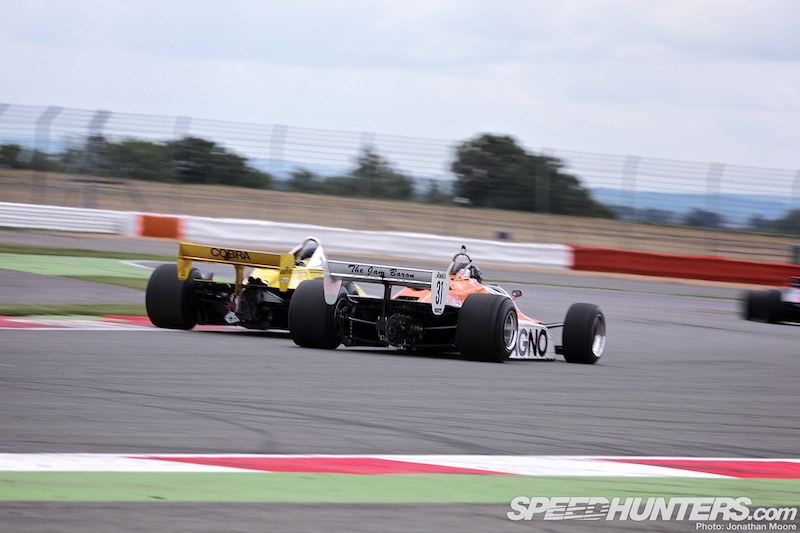
The Arrows A4 is another car that on the modern Avon rubber is performing far better now than it did when built 30 years ago.
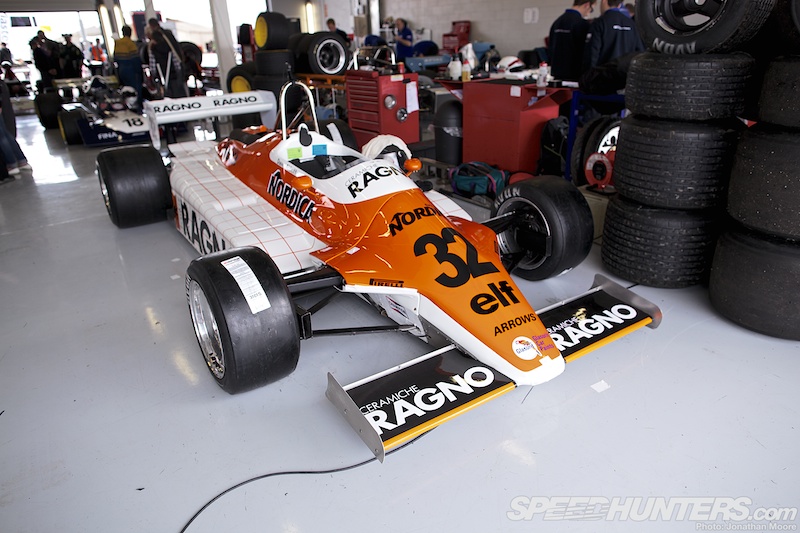
Like the Williams FW07 it had a very clean shape helped by a good livery. The length of width of F1 cars was about to be radically changed though…
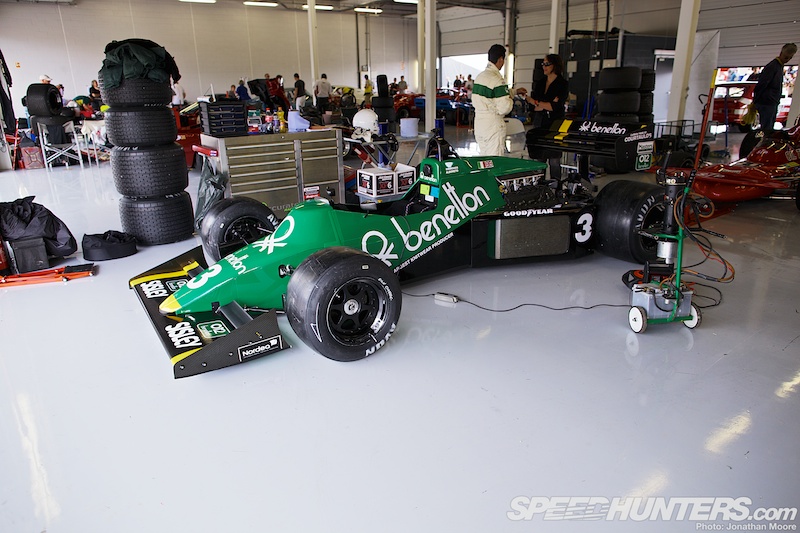
With ground effect banned for 1983, sidepods were dramatically shortened and the cars became far more squat in appearance. With most of the major teams having switched to turbo-charged units, minnows like Tyrrell were left to hunt for scraps at the fast circuits.
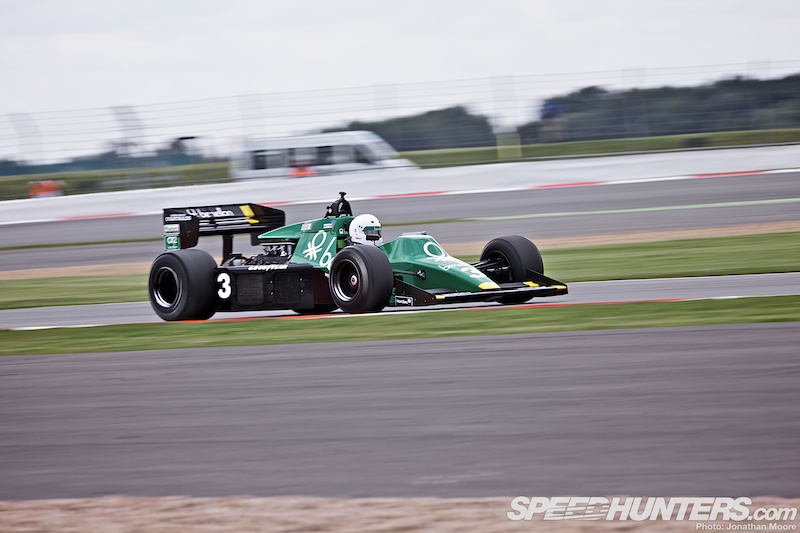
But at the twisty street tracks the Cosworth teams could still put up a fight, and Michele Alboretto famously won in his Tyrrell 012 at Detroit.
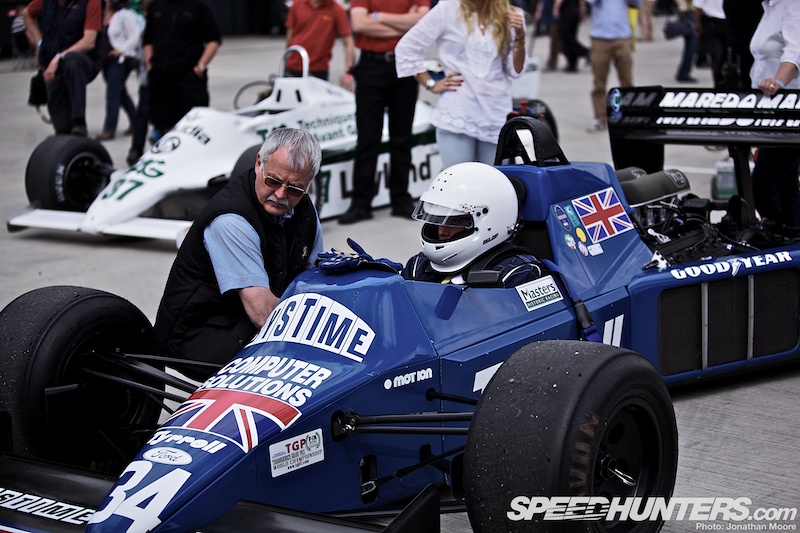
The 012 was upgraded for 1984, but now Tyrrell were the only team to run the Cosworth engine. Martin Brundle had put in an epic drive to finish second at Detroit, only for the team to be disqualified from that race and retrospectively from all the previous races due to a seriously imaginative interpretation of the weight regulations. Perhaps this is why the ’84 012 ran in the invitational class of Grand Prix Masters for cars falling outside their main categories!
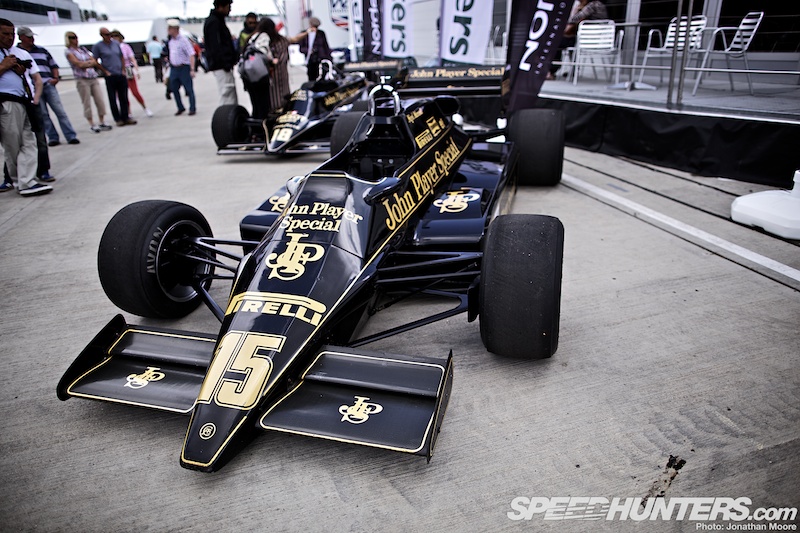
Several John Player Special-liveried Lotus were also on display but not competing, like these two Mansell cars: a 91 and 92.
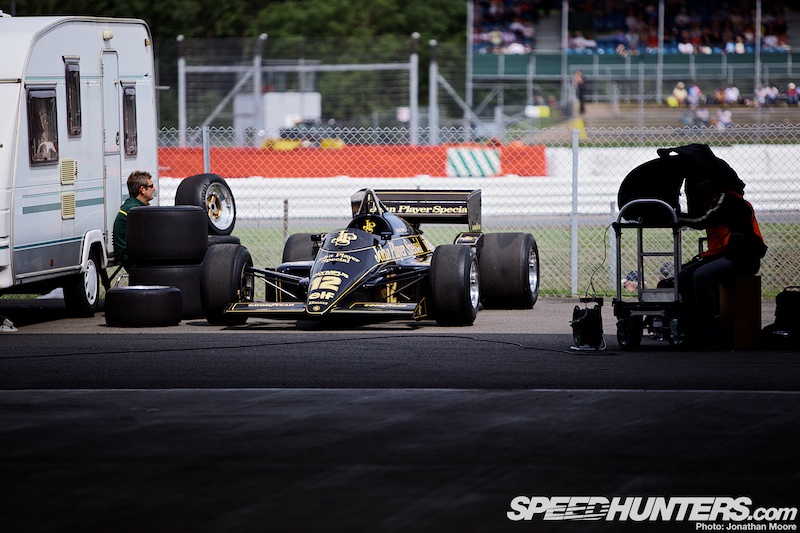
Senna’s 97T was tucked away in a corner of the old pits, though like the other two ’90s JPS-liveried cars didn’t seem to get to play out on track.
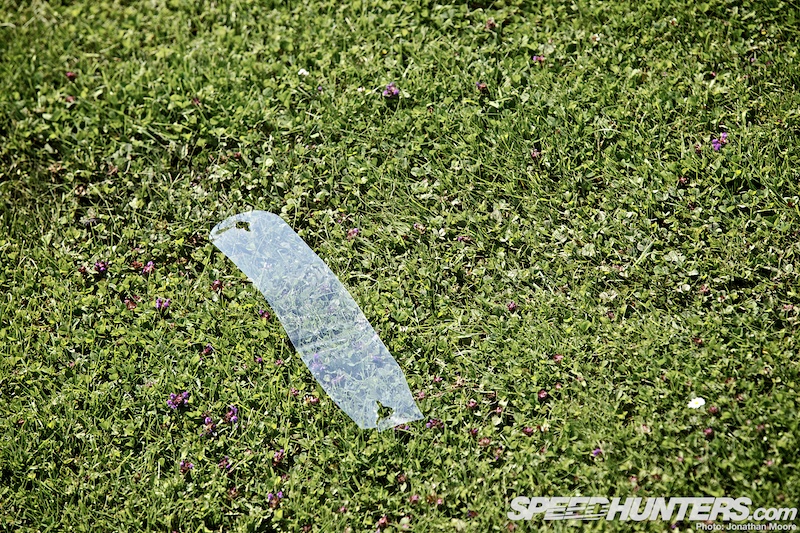
The Grand Prix Masters line-up changes from race-to-race, with local entrants adding their cars as the series visits different countries, so it’s always worth seeing for the variety you get. For every car we didn’t see – the Ferrari 312T for instance – there’s another which makes up for it, and the sight of 30 F1 cars charging into the first corner can’t be bettered, no matter the period you’re watching.
Jonathan Moore
Speedhunters at the 2012 Silverstone Classic

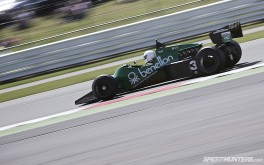
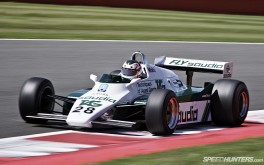
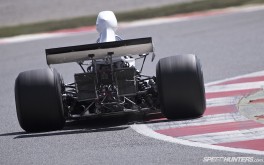
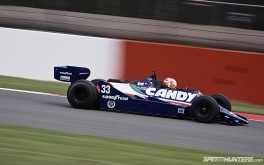
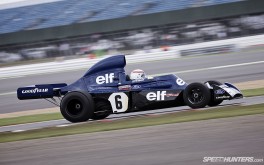
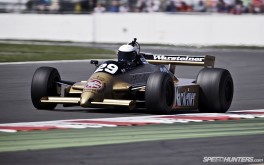
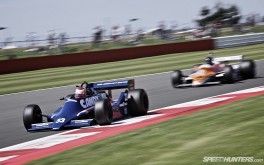
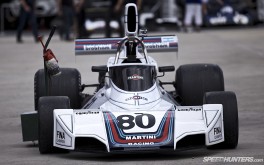
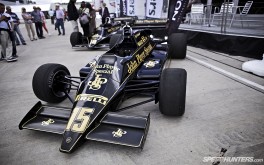





AMAZING!!!
have you guys covered this event before? definitely try and cover it (and similar classic f1 gatherings) in the future. any features planned?
Great event. Good for someone like me. Joke: Why is it called Arrows whwn it's supposed to be Arows. Hehe..
Lovely post Jonathan, some really sweet photos as well... This is what is missing from todays F1 grid... Character and personality! These cars required proper driving skill, especially the ones from the turbo era! Little to no electronic aids and a gearbox that was changed via a conventional gearlever! Thanks for this...
Fantastic stuff, I'd love these to be an F1 support race.
I'd love to see a feature on the BT44, one of Murray's finest
@Fede What about the MP4/4?
amazing car too! But I have a soft spot for Brabhams.. By the way I have discovered the BT44 pictured here is a BT42 converted to look like a BT44....
By the way I have discovered the BT44 pictured here is a BT42 converted to look like a BT44....
Will definitely endeavour to make one of these events in the upcoming years.. A little hard from Australia unfortunately. Great shots and articles as always SH Pav
Pav